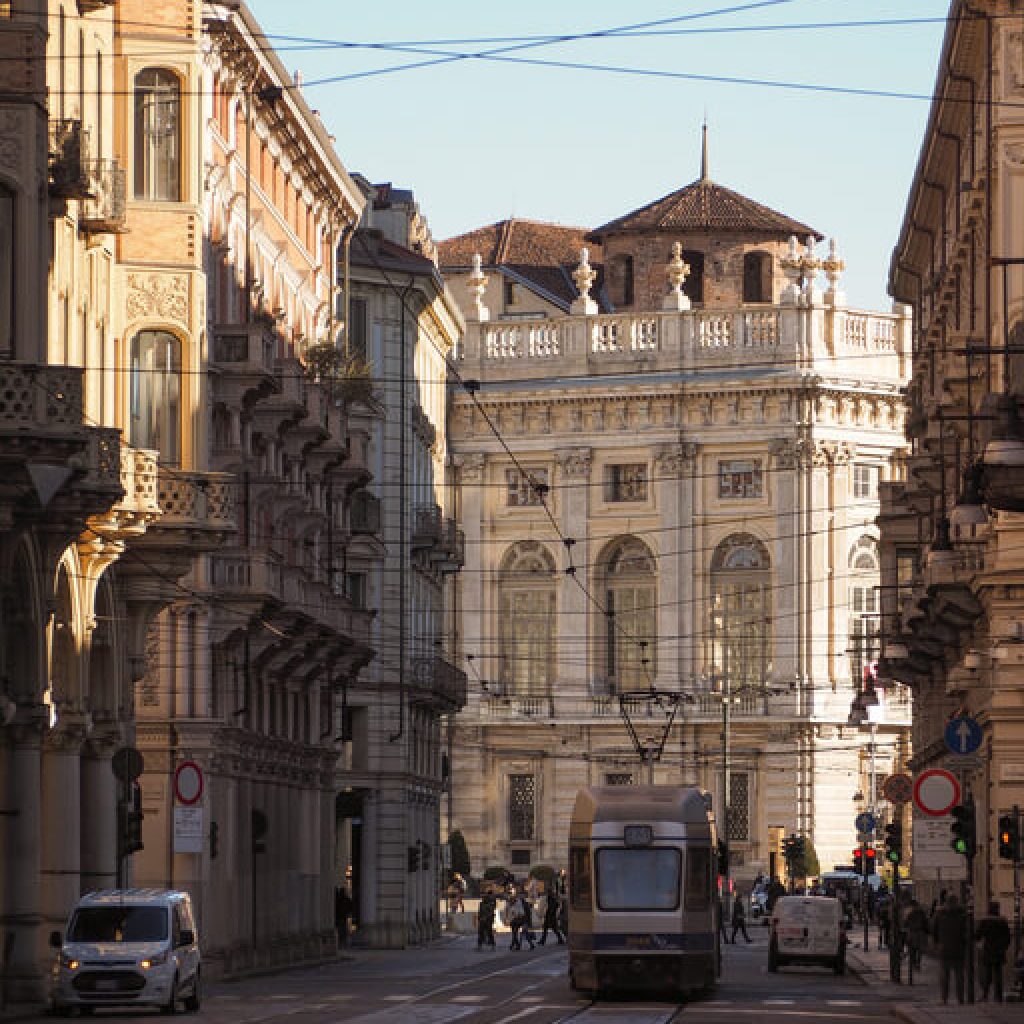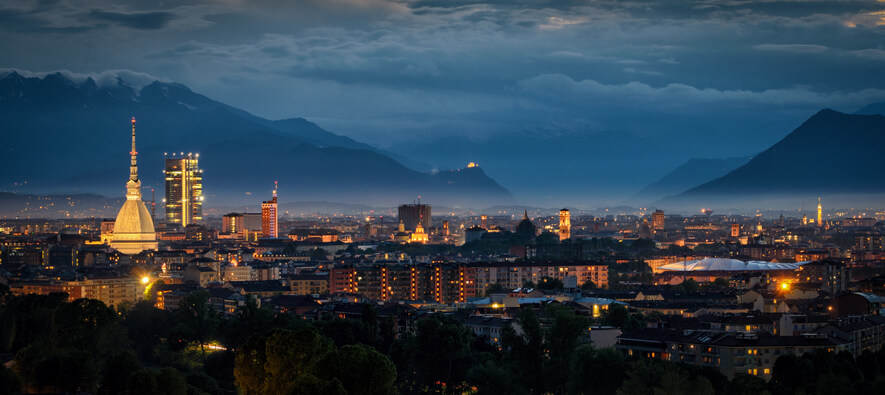Turin
History of Turin

In the northern part of Italy in the region of Piedmont, lies a city with such political and business influence that it once became the sign of unity for the whole country – this is the story of the city of Turin.
According to historians, Taurini people (who came from Celto-Ligurian Alpine descent) once occupied the center of Piedmont, just around the upper valley of the Po River during the 3rd century BC. But in 218 BC Taurasia, the chief town of the Taurini people, was besieged by Hannibal and his allies. The capital was completely destroyed after the rampage so who would have thought that just a couple of centuries later, it would become one of the Roman Empire’s most important military bases?
The Taurini settlement lies right on the edge of the Roman Empire and it was a very strategic location. So in the 1st century BC (around 28 BC), the Romans established it as a town under the name of Julia Augusta Taurinorum.
However the town was conquered by the Ostrogoths, along with the rest of the Italian peninsula, after the fall of the Western Roman Empire. But there was a relatively fast change of power during this time as the city was recaptured by the Romans, overrun by the Lombards, and then finally captured by the Franks. However, the real change happened when it was absorbed by the powerful Royal House of Savoy.
In 1563, Emmanuel Philibert, Duke of Savoy, decided to move the seat of his court to Turin. The Royal House of Savoy called together great architects and artists to redesign the city. Many of the gardens and palaces we still see today were made during this time in the 15th century. The University of Turin was also founded during this era.
However in 1706, the French took over Turin for 117 days during the Battle of Turin. Then it was annexed by the French Empire in 1802 along with the rest of Piedmont. The Kingdom of Piedmont-Sardinia was only restored with Turin as its capital after the fall of Napoleon Bonaparte in 1814.
But this was just the beginning of another struggle as the Kingdom of Piedmont-Sardinia fought for the unification of Italy in the decades that followed.
The fight was not in vain though, as the Italian peninsula was finally reunited. Before it was moved to Florence in 1865 and then to Rome in 1870, Turin was the capital of unified Italy from 1861 to 1865, becoming the first significant sign of the country’s sovereignty.
INTERESTING FACTS
- The city is known for three names: “Taurinum” in Latin, and “Torino” or “Turin” in Italian.
- The city was mostly known as “Turin”, but the city leaders requested the International Olympic Committee (IOC) to change it to “Torino” and make it its official name for the hosting of the 2006 Winter Olympics.
- The word “Turin” means “little bull” in Italian.
- After Rome, Milan, and Naples, Turin is the fourth largest city in Italy.
- Big car companies like FIAT, Alfa Romeo, and Lancia all started in Turin.
- Juventus Football Club – the most successful football team in Italian history to win 28 national titles is based in Turin.

TOP ATTRACTIONS
Turin is home to some of the most amazing Baroque, Rococo, and Neo-classical architecture. From palaces to gardens to public squares, Turin offers more than a lot for tourists and visitors. Here are just some of the top attractions in the city:
- MUSEO EGIZIO (The Egyptian Museum of Turin) – Via Accademia delle Scienze in Turin houses the second largest and the oldest Egyptian Museum in the world. Museo Egizio specializes in Egyptian archeology & anthropology and it holds one of the largest collections of Egyptian antiquities.
- PIAZZA SAN CARLO (St. Charles Square) – Also known as the “lounge of Turin”, Piazza San Carlo boasts elegance and harmony because of its Baroque design. This city square is located close to its heart and is often used for important historical and social events.
- MOLE ANTONELLIANA – Named after its architect, Mole Antonelliana was constructed just a few years after Italy was unified. It was originally created to be a synagogue but it now houses the National Museum of Cinema in Turin and is believed to be the tallest museum in the world as of date.
- LO STADIUM (Allianz Stadium) – If you’re an avid soccer or football fan, you’re going to love visiting this all-seater football stadium in Turin. Formerly known as the Juventus Stadium, Allianz Stadium hosted the Europa League final 2014 and it’s still home to Juventus F.C.
- CAPPELLA DELLA SACRA SINDONE (Chapel of the Holy Shroud) – Constructed to house the Shroud of Turin (or the burial shroud of Jesus Christ), the Cappella Della Sacra Sindone was designed by architect Guarino Guarini in Baroque-style. It is connected to the Royal Palace of Turin and located just outside the Turin Cathedral.
Aside from all of these attractions, there are so many more places to visit in Turin so go ahead and enjoy yourself!
You might have heard of fast food, but have you heard of SLOW FOOD? Well, it’s a food revolution that started in the Piedmont region of Italy where Turin is. This Slow Food Movement started in the 80s and was aimed to reclaim the meaning of healthy and meaningful eating in Italy – one that doesn’t rely on preservatives and synthetic flavorings.
But aside from restaurants that offer dishes freshly made with love, what other foods are great to try out in Turin? Well, let’s find out!
- CHOCOLATES: Turin is considered as one of the largest producers of chocolate in the world and this is why you have to try out their chocolate creations. You can start with Giandujotto (a heavenly blend of chocolate and hazelnuts shaped like tiny hats and covered with gold or silver foils), Cremino (a three-layer chocolate), and Boero (a liquor-filled chocolate). You can also try Bicerin which is a traditional hot drink with layers of espresso, drinking chocolate, and milk.
- WINE: But of course, what is a Piedmont tour without wine? Turin is home to the world’s finest wines because it’s surrounded by lush vineyards that have been grown in perfect natural environments. Among the wines you can try in the city are Barolo (a powerful wine with the perfect blend of subtle flavors) Barbaresco (a red wine made from Nebbiolo grapes that’s great even if not aged), and Gavi (a crisp white wine made from Cortese grapes). Now if you’re not much of a wine person, you might want to try Zabaglione. It’s a whipped dessert made with a mixture of egg yolks, sugar, and you guessed it – wine.
- TRUFFLES – The Piedmont region in Italy is home to the White Truffle which is one of the rarest foods in the world. This deeply aromatic rarity can be found in the vast forest of Turin so you must try eating in restaurants that have dishes featuring this amazing ingredient. You can even try looking for Black and White truffles by joining Turin Truffle Hunting activities!

